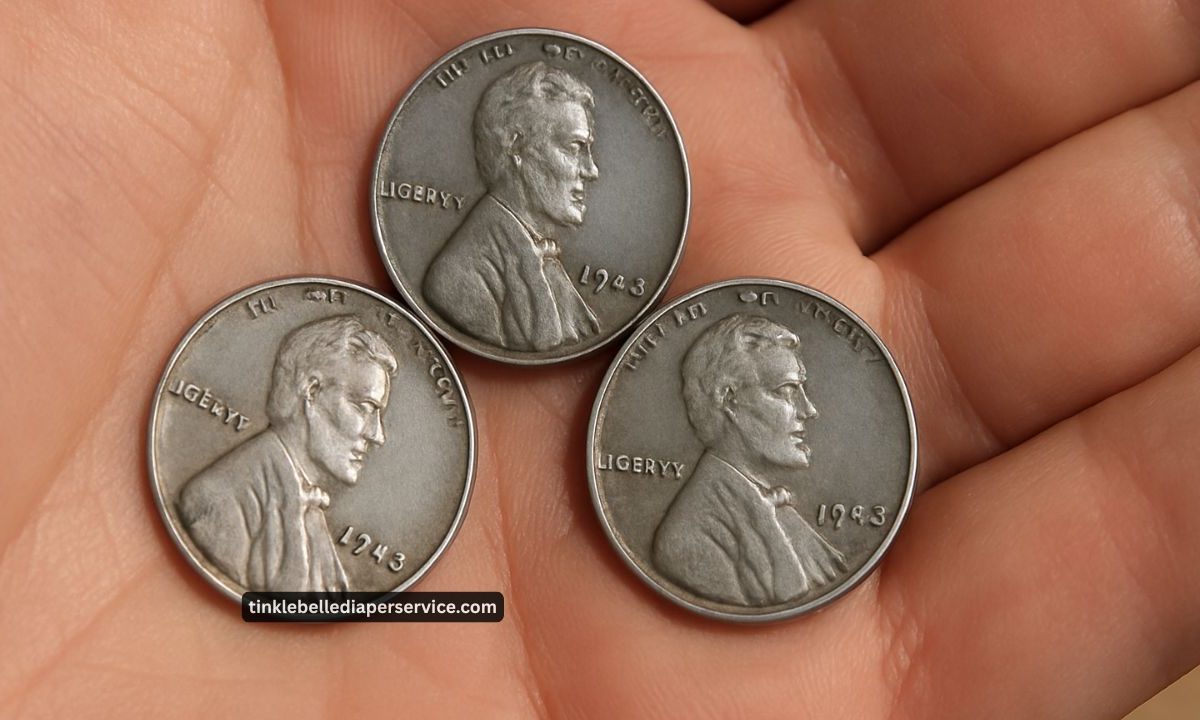In the realm of numismatics, few coins have garnered as much intrigue as the 1943 Lincoln Wheat Penny.
While most pennies are worth just one cent, a rare variant from 1943 has been valued at an astonishing $5.1 million.
Even more captivating is the possibility that this coin might still be in circulation, waiting to be discovered.
Historical Context: The 1943 Copper Penny
During World War II, the U.S. Mint faced a copper shortage due to the metal’s necessity in wartime production.
To conserve copper, the Mint produced pennies using zinc-coated steel in 1943. However, a few copper planchets (blanks) from 1942 were mistakenly used, resulting in a limited number of 1943 copper pennies.
These error coins are among the rarest and most sought-after in American coinage history.
Why Is This Penny Worth $5.1 Million?
The immense value of the 1943 copper penny stems from its rarity and the circumstances of its creation.
Only an estimated 15 to 20 of these coins are known to exist today. One such coin, believed to be in pristine condition, has been valued at $5.1 million by collectors and experts.
The coin’s allure is further enhanced by the mystery surrounding its whereabouts, as it has not been seen in decades and is presumed to be in private hands or possibly still in circulation.
Identifying the $5.1 Million Penny
For those hoping to stumble upon this numismatic treasure, here are key features to identify a 1943 copper penny:
- Date: 1943
- Material: Copper (non-magnetic), unlike the common steel pennies of that year
- Weight: Approximately 3.11 grams
- Mint Marks:
- No mint mark (Philadelphia)
- “D” (Denver)
- “S” (San Francisco)
A simple magnet test can help; if the 1943 penny sticks to a magnet, it’s made of steel and not the rare copper variant.
Key Details of the 1943 Copper Penny
| Feature | Description |
|---|---|
| Year | 1943 |
| Composition | Copper (95% copper, 5% tin and zinc) |
| Weight | Approximately 3.11 grams |
| Known Examples | Estimated 15 to 20 |
| Estimated Value | Up to $5.1 million |
| Distinguishing Test | Non-magnetic (does not stick to magnet) |
The Penny’s Place in Modern Times
As of May 2025, the U.S. Treasury announced plans to cease production of the penny coin due to rising production costs, with circulation expected to end by early 2026.
This decision adds a layer of urgency and nostalgia to the hunt for rare pennies like the 1943 copper variant.
With approximately 114 billion pennies still in circulation, the chance, however slim, of finding this rare coin remains.
The story of the 1943 copper Lincoln Wheat Penny is a testament to how a small minting error can create a legendary artifact.
Its rarity, historical significance, and the mystery of its current location continue to captivate collectors and enthusiasts alike.
As the era of the penny draws to a close, the allure of discovering such a treasure in everyday change endures.
FAQs
How can I confirm if I have a 1943 copper penny?
To verify the authenticity of a 1943 copper penny, conduct a magnet test (it should not stick), check its weight (approximately 3.11 grams), and consult a professional coin grading service for certification.
What should I do if I find a 1943 copper penny?
If you believe you’ve found a 1943 copper penny, avoid cleaning it, store it safely, and seek evaluation from a reputable coin grading service to determine its authenticity and value.
Are there other valuable Lincoln Wheat Pennies?
Yes, other valuable variants include the 1909-S VDB penny, known for its low mintage and designer’s initials, and the 1955 Double Die penny, famous for its noticeable doubling error.

